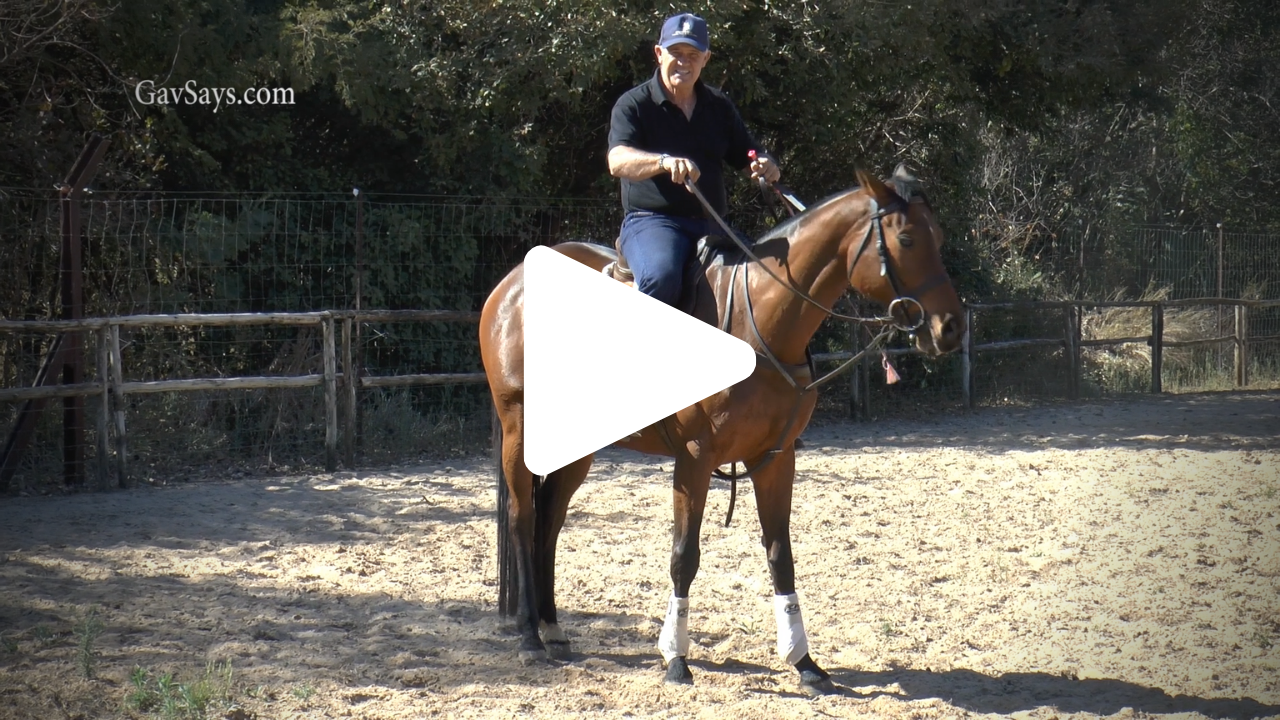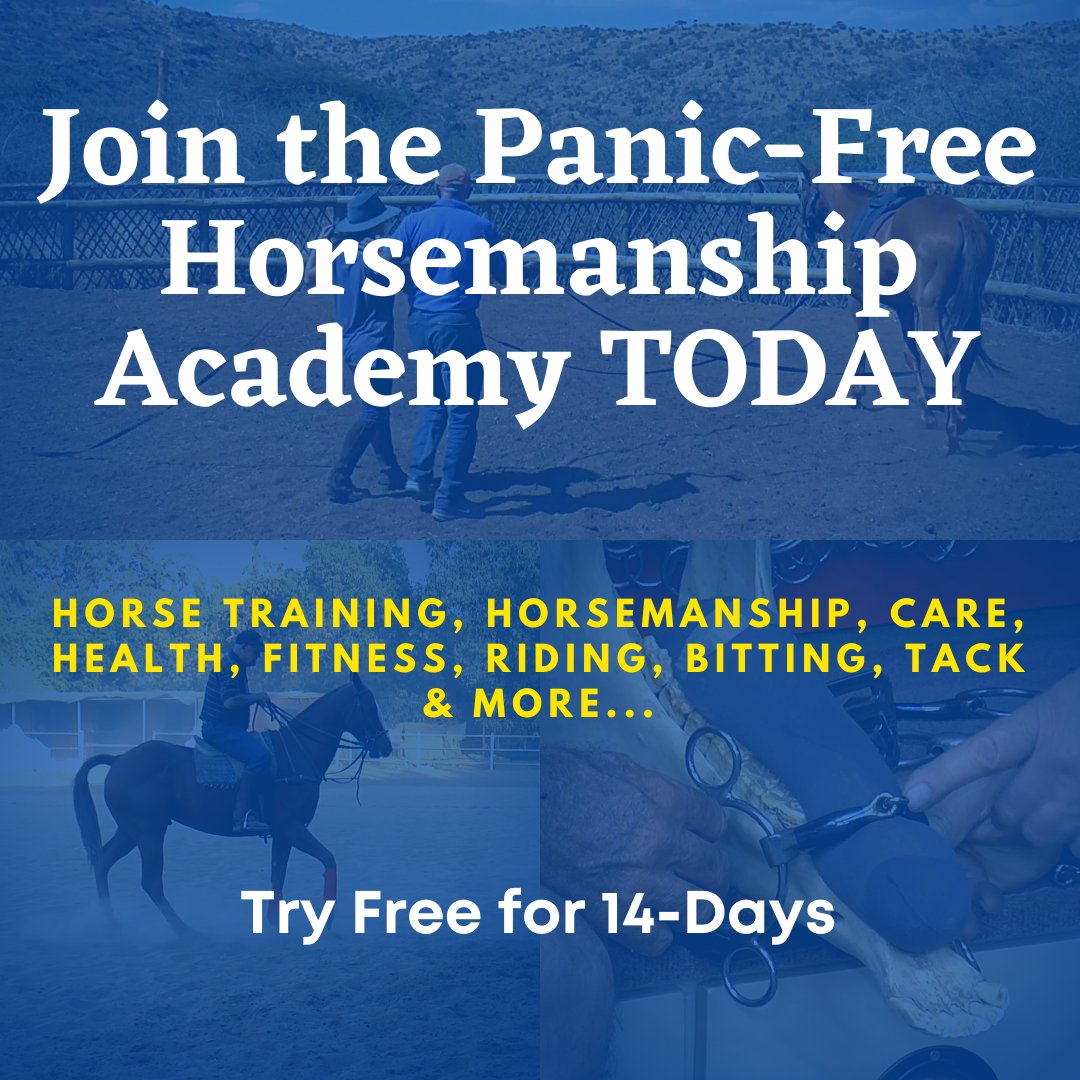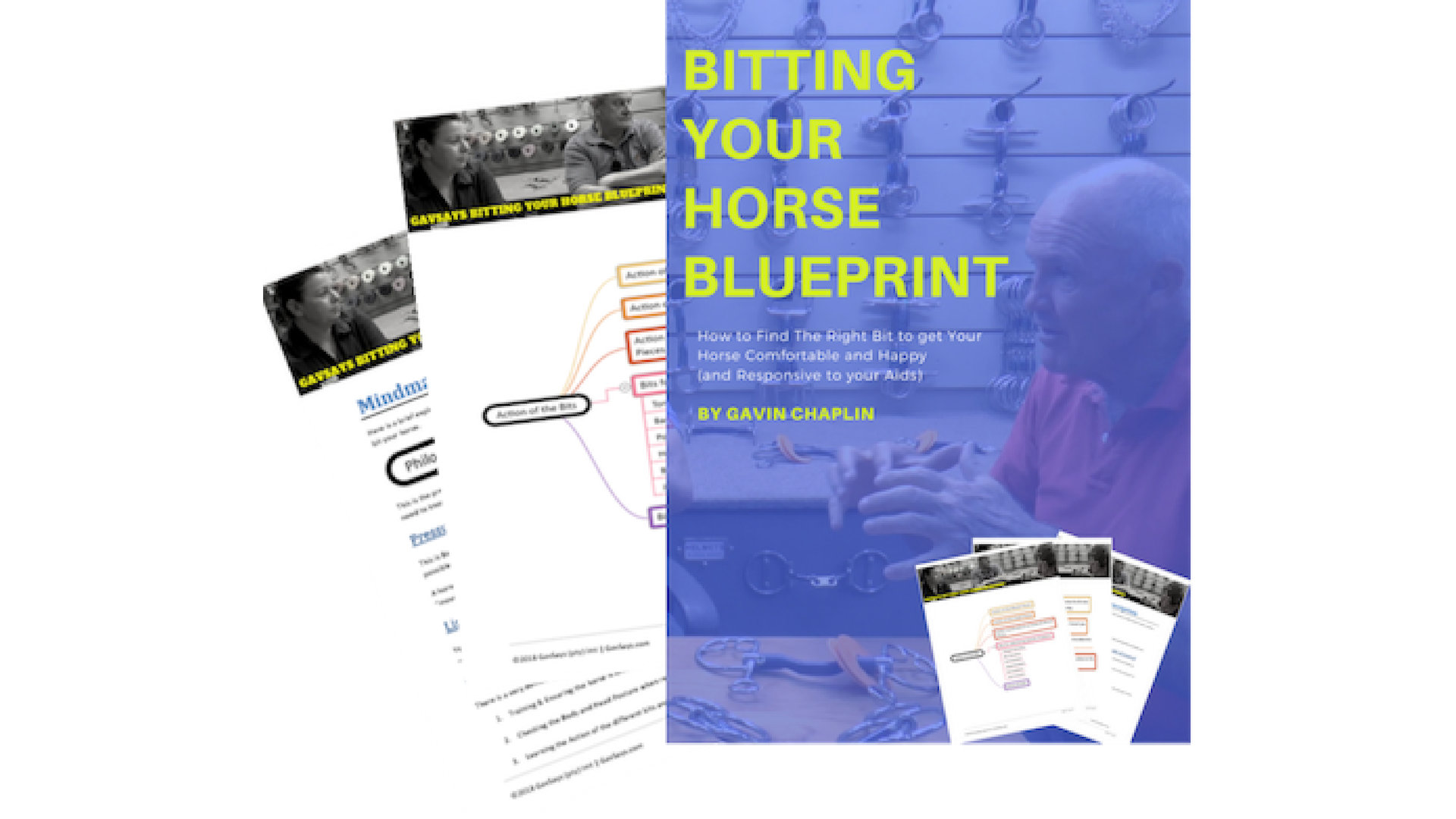Horse Training Tips: How to Assess a Horse for Training
With these horse training tips you'll learn the steps I take to assess a horse for training.
This lesson follows on from from the lesson with the horse, Sandy, who showed signs of StringHalt.
Horse Training Tips: How to Assess a Horse for Training
Transcript:
I thought it might be helpful before we actually have a look at the training session I did with Sandy to take you through the way that I assess a horse and have a look at what I'm going to have to do with the horse. You will recall that I've told you before, it's very helpful to first stand back and watch the horse being ridden because you will pick up a lot of information about the horse that way.
So let's just run through that checklist that I go through with Sandy. So in assessing Sandy, the first thing I noticed was the bit she was in. Firstly, I see that she's in a Vulcanite Pelham. Now, number one, I don't like vulcanite because it dries the horses mouth, and it's already causing you problems that you'd... of your own making that you don't need.
Secondly, what I'm seeing is that there's a grackle nose band with that Pelham. And that's making me already focused in that area because I'm wondering, does the horse really have an insensitive mouth? One of the next things I notice is that when Megan checks the horse for the first time, you can see immediately that she grabs a bit and goes into the bit.
Now that can be a schooling problem. And more often than not is, because the horse is more than likely protecting itself from the set up that it's in, the Pelham with the grackle nose band and trying to do that... But it's also not being taught to flex and come away from the light pressure of the reins.
The next thing that you will see is that in that first roll back, that Megan does, that the horse is definitely got a problem somewhere in its back legs, as we've discussed, this is a problem called stringhalt. But you will see how the horse very gingerly, as it's asked to start turning, kind of puts that back leg down and tries, tries to balance itself on that back leg.
So already you can see that that might be a problem and checking the horse out further, though, we did figure out that the stringhalt is quite mild in this case. The horse can back-up so you can follow the traditional schooling methods of getting the horse to flex and then to back up. Cause some horses with that stringhalt, you wouldn't want to get them to back up. If that leg locks up, when you taking them backwards.
The next thing that I'm seeing is the horse is very stiff, okay. From that grabbing, it goes through the pole and the body, and it has to be dragged around to do any kind of rollback. And in that drag with your hands, the horses head will fall inwards because it doesn't yet know how to move correctly through that.
And that will also tell you that the horse is insensitive to leg aids, because it doesn't know how to come off the leg and that the front shoulders and neck and head move together supply and easily away from that leg and a light touch of the reins. Here, you have to drag the horse and its head falls inwards as you dragging it. So that's the next problem.
So right, if we go through the checklist, it's grabbing a bit, it's got a nose point, it's heads a little bit high, it's stiff, it's got a problem in the back end. It doesn't know how to move off your legs. So, now you're going through your checklist and really finding out what the horse can and can't do.
Okay. But the biggest thing that I really want you to pick up through the lessons that I bring to you after discussing this, is how barn sour or stable bound or herd bound, whatever you want to call that, how it wants to get back to its mates all the time. And it's always kind of... it's mind is focused on getting back to its friends.
It's never present with you in the lesson. And I find that that is one of the biggest things that I have to overcome when I'm starting a lot of horses, that nobody really pays attention to that, the horse is not present with you in the lesson. And through my experience anyway, I find that you have to draw a line in the sand very quickly and say,
you're not going to do that. It's a little bit like the parent that is always telling a child don't do that. And the child does it, "don't do that." And the child keeps on doing it. The child never figures out that that behavior is unacceptable because there's never any kind of reinforcement of the no. So horses are exactly the same for me.
You will see that Megan tries very gently to overcome that problem and the problem just persists and persists and persists. Okay. And when I get on the horse, I get... I start off gently to see if I can do it gently, but when the horse keeps on doing it, I very quickly get much stronger with the horse. You will see that I use the one rein stops that I bend the horse.
The minute it starts to present that kind of behavior. There's a consequence to that. And within a day, that whole way of thinking of the horse is gone. It knows it can't do it because it's a really unpleasant thing for it.
If it's going to do it, because if it's facing home, you will see the horse kind of almost trotting and tripling and cantering on the spot, trying to get away from you and also going sideways and not turning away from the stables. And when you've got it facing away and you stop, then what it does is it drops its head and starts to back up to try and go where it's wanting to go.
So you're going to have to really get strong with that kind of problem to say to the horse, "You're not going to do that." So far and no further. And they learn very quickly not to do that.
The next thing once I've taken the Pelham out, okay, and put it into a control plate snaffle, is that you notice very quickly that the horse is a little bit tongue fussy. So I persevere with that just for a little bit to see if that, and you know, if the tongue sensitivity is in fact a problem, and you will see in the following video that I move her to a Don McCardy mouth piece, which is a nice ported gag.
And I use the Pelham cheek piece, not the gag cheek piece on that. And because she has got into the habit of grabbing. Now, a Pelham is stronger than a gag.
The pelham cheek piece will be stronger than your gag cheek piece. So I go to that and unusually for me, I use just the bottom rein, the pelham rein, just to say to the horse very quickly, you won't grab, you won't go into the bit, because that is going to be a much stronger repercussion for doing that.
Where on the snaffle attachment, you have to pull much harder to get the same kind of response from the horse. But again, you will also notice that in that particular bit she is very head high and nose pointy. Now you can go to mechanical aids to help you to overcome that. You could use a draw through between the legs and try and get the head down that way.
But I find it's much better in the long-term not to be using those mechanical aides to start with. Teach the horse to start with. And you teach it by getting it to flex number one, and when it flexes, you give away the pressure of the rein.
Secondly, you teach it to move off your legs and do a leg yield. And as it's leg yielding, the minute it drops away from the bridle and goes soft in your hands, you give away the pressure. So you teach the horse to come down.
Now, why am I opposed to using the pulley action type setup? Number one, a gag with a rope running through it, is a pulley action. It's a slow release. A running rein, or draw rein, if that's what you want to call it, is a slow release. So you take the tension the horse gives and you try and give back that tension, but it's a slow release. So the horse doesn't learn.
Where, when you've got a direct rein, okay. When you take the tension, it's there, when you let go, it's gone. So the horse learns very quickly that the minute it responds, then that pressure goes immediately. That that is what it can do to relieve the pressure. And they learned very quickly from that.
So again, my usual comment, you, If you found this video helpful, if you've got any other information you would like to share with us, particularly in this instance on the stringhalt, we'd love to hear from you, just go to the comments bar underneath and drop us a line. We love hearing from you.




Comments
Got questions, comments or feedback! Then have your say in the box below...